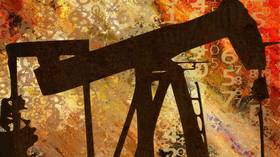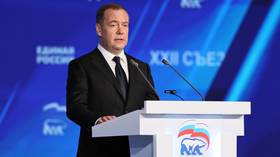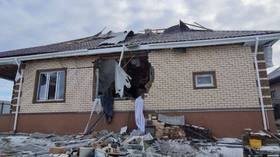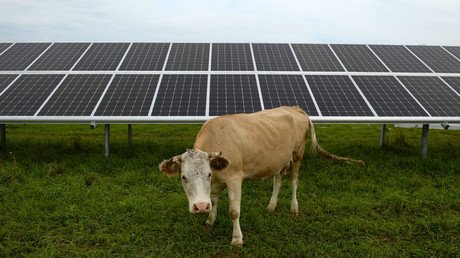Saudi Arabia refuses to learn from its two FAILED oil price WARS

Saudi Arabia appears to have learned nothing from its two failed oil price wars, with the oil kingdom suggesting this week that it is ready to increase its production capacity to 13 million bpd.
Having failed to achieve the slightest semblance of success in the two oil price wars that it started – the first running from 2014 to 2016, and the second running from the beginning of March to effectively the end of April this year – it might be assumed that key lessons might have been learned by the Saudis on the perils of engaging in such wars again. Judging from various statements last week, though, Saudi Arabia has learned nothing and may well launch exactly the same type of oil price war in exactly the same way as it has done twice before, inevitably losing again with exactly the same catastrophic effects on it and its fellow OPEC members. At the very heart of Saudi Arabia’s problem is the collective self-delusion of those at the top of its government regarding the Kingdom’s key figures relating to its oil industry that underpins the entire regime. These delusions are apparently not discouraged by any of the senior foreign advisers who make enormous fees and trading profits for their banks from Saudi Arabia’s various follies, most notably oil price wars. It is, in the truest sense of the phrase, a perfect example of ‘The Emperor’s New Clothes’, although in this case, it does not just pertain to Crown Prince Mohammed bin Salman (MbS) but to all of the senior figures connected to Saudi Arabia’s oil sector. One of the most obvious examples of this is the chief executive officer of Saudi Arabia’s flagship hydrocarbons company, Saudi Aramco (Aramco), Amin Nasser, who said last week – bewilderingly for those who know even a modicum about the global oil markets – that Aramco is to go ahead with plans to increase its maximum sustained capacity (MSC) to 13 million barrels per day (bpd) from 12.1 million bpd.
Also on rt.com Saudi reserves plunge as kingdom struggles with Covid-19 pandemic & oil-market routQuite aside from the sheer pointlessness of this posturing in a world already awash in oil as a result of the negative demand effect of the COVID-19 pandemic and the output overhang from the oil price war just ended, this comment from Saudi Arabia’s third-ranking oil man (after MbS, albeit by the loosest possible definition, and Energy Minister, Abdulaziz bin Salman al Saud), is extremely misleading. As such, it feeds into the oil market’s collective understanding since the 2014-2016 oil price war that anything that Saudi Arabia says about its oil industry is not to be taken as true, without a lot of additional fact-checking. Regarding the ‘maximum sustained capacity’ statement, to begin with, this term is one that has been repeatedly used by Saudi Arabia since the first oil price war disaster to cover for two other long-running delusions relating to the real level of its crude oil reserves and to the real level of its spare capacity.
Before the 2014-2016 oil price war, Saudi had stated for decades that it had a spare capacity of between 2.0-2.5 million bpd. This implied - given the widely-accepted (but also wrong) belief that Saudi Arabia had pumped an average of around 10 million bpd for many years (it actually pumped an average of just over 8.162 million bpd from 1973 until 2020) – that it had the ability to ramp up its production to about 12.5 million bpd when required. However, even as the 2014-2016 oil price war dragged on and wreaked new heights of economic devastation on Saudi Arabia and its OPEC colleagues, the Kingdom could produce on average no more than just about 10 million bpd. Crucially here, the Energy Information Administration (EIA) defines spare capacity specifically as production that can be brought online within 30 days and sustained for at least 90 days, whilst even Saudi Arabia has said that it would need at least 90 days to move rigs to drill new wells and raise production by an additional 2.0-2.5 million bpd.
Also on rt.com Saudi Arabia and Kuwait restart production at huge shared oil fieldInstead, from that point onwards, Saudi Arabia began to attempt to obfuscate this spare capacity lie by semantic trickery. Senior Saudis spoke of ‘capacity’ and of ‘supply to the market’ rather than of ‘output’ or ‘production’ and these two groups of terminology mean very different things. ‘Capacity’ (or its synonym, as far as the Saudis are concerned, ‘supply to the market’) relate to the utilization of crude oil supplies held in storage at any given time in the Kingdom plus the supplies that can be withheld from contracts and re-directed into those stored supplies. It can also mean oil clandestinely bought in from other suppliers (notably Iraq in the last oil price war) through brokers in the spot market and then passed off as its own oil supplies (or ‘capacity’). Exactly the same semantic trickery was used to cover up the actual supply shortfalls in the aftermath of the September 2019 attacks by the Iran-backed Houthis on Saudi Arabia’s Khurais and Abqaiq facilities, with the Energy Minister talking of ‘capacity’ and later of ‘supply to the market’, which are absolutely not the same thing at all as actual production at the wellheads.
The reason why Saudi Arabia seeks to obfuscate its real production and also spare capacity figures is that oil has been the only true foundation-stone of the Kingdom’s geopolitical power since its discovery in the late 1930s and this is also why it lies about its crude oil reserves. Specifically, at the beginning of 1989, Saudi Arabia claimed proven oil reserves of 170 billion barrels but only a year later, and without the discovery of any major new oil fields, the official reserves estimate somehow grew by 51.2 percent, to 257 billion barrels. Shortly thereafter, it increased again to just over 266 billion barrels, a level that persisted until a slight increase in 2017 to just over 268 billion barrels, with, again, no major new oil field finds made, a figure which – depending on who you believe – has increased yet again. At the same time, as highlighted, Saudi Arabia took out of the ground an average of 8.162 million bpd from the beginning of 1973 to the beginning of 2020, which totals over 2.979 billion barrels of crude oil every year, or 137.04 billion barrels of crude oil taken out of the ground over that time period. Given this tangible and proven production, with no major new field finds (and declining production at many of its core oil fields as well, including Ghawar), it is mathematically very difficult to see how it is possible that Saudi Arabia’s crude oil reserves are not actually around 120 billion barrels (and that is using the highly-dubious 257 billion barrels base figure) and not the stated 268+ billion barrels.
Given the wider public realization that the core figures upon which Saudi Arabia’s remaining geopolitical and economic power is based are essentially nonsense, Aramco’s share price might - in the normal circumstances of a correctly functioning market - be regarded as vulnerable. However, such was the absolute desperation on the part of MbS not to lose personal credibility by allowing the omni-toxic Aramco IPO to be seen to fail – at least in Saudi Arabia – that very few of the share purchasers have much to lose. In order to even sell the 1.5 percent stake finally offered (cut down from the initially-mooted five percent), Saudi banks were ‘encouraged’ to offer to lend money to retail customers at a 2-to-1 ratio for every riyal they would invest in Saudi Aramco (compared to average leverage ratio limit for loans of 1-to-1). Additionally, the IPO’s international adviser banks were there to take up any slack in the offering left after the sovereign wealth funds of neighboring states were equally ‘encouraged’ to participate on the offering, as were various senior Saudis fearful of a re-run of their treatment in the Ritz Carlton in 2017.
READ MORE: Saudi Aramco profits crash 73% as coronavirus sinks oil market
Now, in addition to these levers, Aramco has also reassured this small cadre of investors that it will meet the minimum US$75 billion dividend payout that it was forced into promising in order to ensure that it sold even 1.5 percent of the company. As Aramco’s share price is now intimately connected to MbS’s standing at home, Aramco has little choice in the matter, despite the announcement last week that its net profit plunged by 73.4 percent in the second quarter of this year. This was entirely due, ironically, to Saudi Arabia’s starting yet another oil price war to destroy the US shale sector by crashing prices through overproducing at a time when demand was already annihilated by the COVID-19 pandemic. Such figures, of course, will become entirely meaningless if Saudi Arabia embarks on yet another oil price war in the not-too-distant-future, as is the clear implication of the announcement that it will increase its MSC to 13 million bpd from 12.1 million bpd, as the result for Saudi Arabia next time could be the end of the al-Saud dynasty in the Kingdom.
This article was originally published on Oilprice.com














